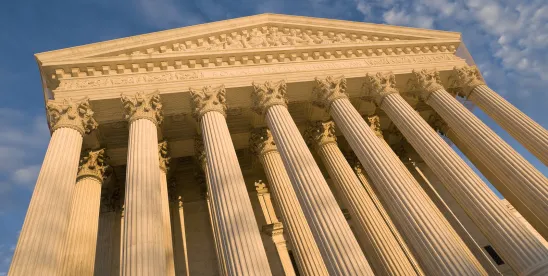The U.S. Supreme Court did not issue any merits opinions yesterday, but it did issue two orders denying cert.
One of them, Nicholson v. W.L. York, Inc., is potentially significant for litigants of discrimination claims under Section 1981 of the Civil Rights Act of 1866, 42 U. S. C. §1981 (“Section 1981”). The result of a second, in Snope v. Brown, a firearms case, might surprise some observers of the Court.
Chanel Nicholson, a strip club dancer, sued several Houston area nightclubs, claiming that they violated Section 1981 by denying her shifts on numerous occasions between 2013 and 2021 because they didn’t want "too many Black girls" working at the same time. She claimed that most of the recent acts against her occurred within the statute of limitations period, that the statute of limitations clock restarts every time there is a "discrete" act of discrimination, and that it did so each time she was sent home from a shift for discriminatory reasons. However, the U.S. Court of Appeals for the Fifth Circuit concluded that the more recent acts were just the “continued effects” of prior instances of race-based exclusion and thus were not independently actionable.
As is typical, the Supreme Court doesn’t write opinions explaining the denial of cert., but Justice Jackson, who dissented along with Justice Sotomayor, did, and her analysis might seem on point for those who have dealt with some cases alleging continuing violations of law. According to Justice Jackson:
The clubs’ policy of excluding Black dancers, if proven true, is discriminatory—but so, too, is each decision to bar a dancer from the premises because of her race. . . . If the discrete act that is the subject of the plaintiff’s discrimination complaint is itself discriminatory, and if it allegedly occurred within the statute of limitations period, then that discrimination claim is timely—full stop.
With a certain logic that many employment lawyers who follow this blog have faced, Justice Jackson concludes that “[i]f sustained discriminatory motivation is all that is required to transform recent, racially discriminatory acts into the ‘continued effects’ of earlier discriminatory conduct, then past discrimination could inexplicably prevent recovery for later, similarly unlawful conduct.”
Setting aside competing views on what is logically commanded, it is interesting to note that Justice Kagan was not a dissenter. This suggests a strong view among a significant majority of the Justices that, at least in civil rights cases, statutes of limitations should be applied literally and rigorously. In short, the decision in Nicholson provides what should be a useful tool for defense lawyers, notwithstanding that the Court did not issue a decision on the merits.
Snope v. Brown concerns the State of Maryland’s prohibition of ownership of AR-15s, the most popular civilian rifle in America. The petition addresses “the question whether this ban is consistent with the Second Amendment.” The Fourth Circuit held that AR-15s are not so protected.
Again, there is no majority opinion denying cert. However, the lineup of the Justices is interesting: Justices Thomas, Alito, and Gorsuch would have granted the petition, but that makes three, and it takes four to grant cert. However, the Chief Justice and Justice Barrett voted with the three liberals to deny the petition, and Justice Kavanaugh wrote an opinion that is not unsympathetic to the three dissenters but reaches no definitive conclusion because he believes that other cert.-worthy cases will arise that will allow the ultimate resolution of the AR-15 coverage issue.
For future reference, I note that the Kavanaugh statement proceeds from his view that millions of Americans own AR-15s and that most states allow their possession, supporting the conclusion that AR-15s are in “common use” by law-abiding citizens and therefore are protected by the Second Amendment. The ultimate resolution of the matter, assuming it occurs, will depend upon whether a majority of the Court concludes that the AR-15 is distinguishable from the M-16 automatic rifle used by the military. But that is for another day.
Yesterday was a day for dissenting opinions that may presage future cases but are not determinations on the merits. At least with respect to Section 1981 cases, a good deal of guidance can be gleaned from the Nicholson case.




 />i
/>i

